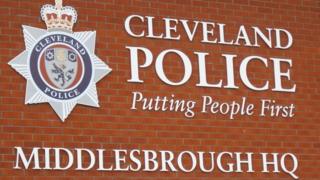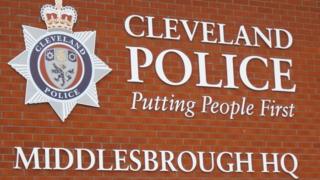Cleveland Police: Five key failings at crisis-hit force
The police watchdog has rated the organisation inadequate, but how exactly is it going so wrong? …

 Image copyright PA Media
Image copyright PA Media Cleveland Police has become the first force in England and Wales to be rated inadequate across all areas of performance. The police watchdog went so far as to say it is “putting the public at risk” – so what are its key failings?
The organisation, which has lurched from one crisis to another in recent years, has had five chief constables since 2012 when Sean Price was sacked after lying about his role in the recruitment of the former police authority chairman’s daughter.
It was effectively put in special measures earlier this year, but Chief Constable Richard Lewis, who was appointed in April, has vowed to turn things around. As he admits, he has a difficult job on his hands.
With the publication of the HM Inspectorate of Constabulary and Fire & Rescue Services report, the force’s inadequacies have been laid bare for all to see.
Vulnerable people ‘put at risk’:
Inspectors said they had “serious concerns the force is leaving vulnerable victims at risk”.
They noted there were “too many examples” of officers not identifying vulnerable people – including children – and either providing a delayed response or failing to respond at all.
Such failings led to it missing opportunities to safeguard the vulnerable and exposed them to danger and “high levels of repeat victimisation”.
In the 12 months to April 2019, the number of domestic abuse repeat victims increased by 21% compared with the previous 12 months, inspectors found. Nearly half of the incidents reported involved people who were repeat victims, but in “too many cases” officers were not proactively pursuing offenders.
Additionally children in domestic abuse households were not classed as vulnerable and therefore exposed to harm.
With not enough officers on shift, the force also struggled to respond to missing persons calls quickly. Inspectors found examples of youngsters being reported missing overnight and no-one trying to locate them until the next morning.
Preventing crime:
Inspectors found there had been a “significant deterioration” in the way Cleveland Police prevents offences.
Despite a 17.6% rise in crime in the past year and 12 killings, the report made the scathing assessment that “crime prevention isn’t a priority for the force and this is a cause of concern”.
A lack of leadership was highlighted alongside issues over the way neighbourhood policing teams are staffed and operated.
The way investigations are conducted attracted further criticism, with strategies described as “ad hoc” and “not well co-ordinated”.
Those issues mean the force “doesn’t engage well with its communities” and “doesn’t fully understand local concerns”, the report concluded.
Inspectors told the force to improve the quality of investigations and the time it takes to carry them out, as well as taking immediate steps to ensure more direction is given and resources are properly allocated.
Behaviour of senior officers:
The behaviour of high-ranking officers and staff set alarm bells ringing, with many “not taking responsibility” and “not acting with honesty, integrity and competence”.
The inspectorate’s report stated their behaviour was having a “profoundly negative effect”.
Leaders “knew things were happening that put vulnerable victims at risk but were not taking action” and made changes to processes without considering what impact they could have on victims and other vulnerable people.
When inspectors asked for information on actions being taken by the force, senior officers were “unable to provide evidence to support some of the things they claimed were happening” with the watchdog finding a number of “incorrect” statements. Key information being passed on by officers to the chief constable was deemed not “trustworthy”.
When staff were asked to provide feedback about how they saw the force operating, they described it as “directionless, rudderless and clueless”.
Downgrading incidents to meet targets artificially:
Struggling to deal with all incidents involving vulnerable people, the force leaves over a third of them waiting for a response.
In order to help the organisation meet its response time targets, officers frequently downgraded the severity of incidents.
“Priority” calls requiring a response within 60 minutes were “inappropriately downgraded” to a lesser status, meaning victims endured a “significantly longer wait”.
While data showed the force had a 90% response rate to emergency incidents in April 2019, its actual response rate was 64%.
Inspectors had already flagged up the issue to the force in July 2018, but it continued to report inaccurate data until the team visited again in May this year.
Tackling corruption:
Although some improvements had been made, the inspection team found the organisation is failing to identify officers and staff “most at risk” of corruption.
Despite holding some information, it “doesn’t refer to profiling corrupt employees, identifying locations within the force where corruption is more prevalent, or understanding external corruptors”, inspectors said.
Additionally, the force’s assessment of counter-corruption threats did not match up with national categories.
Inspectors reviewed 57 items of corruption intelligence and found 14 required further work.
Examples were also found of staff restricting the parameters of corruption investigations and ignoring the possibility of other risks.




